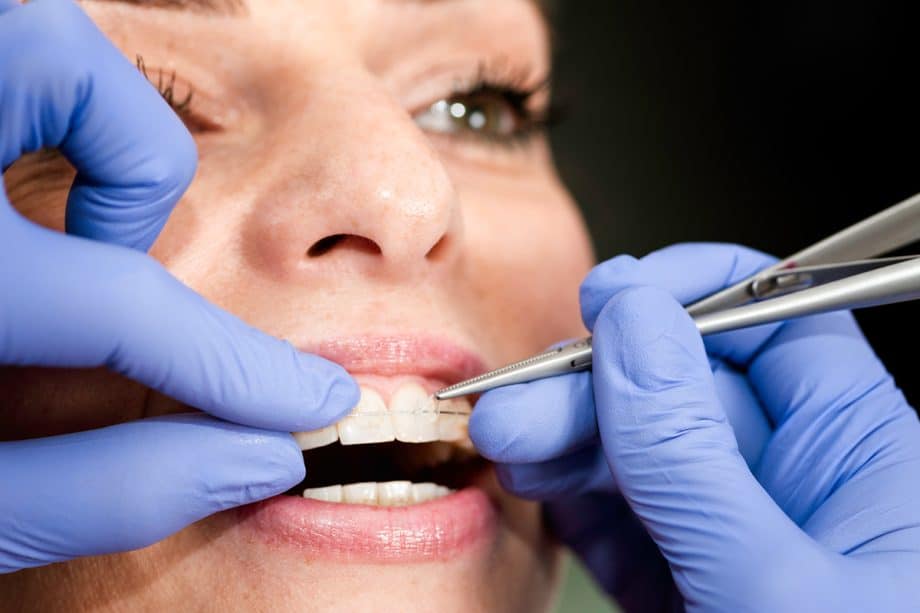Braces are an orthodontic treatment used to straighten your teeth and align your bite. They can improve the health of your teeth, mouth, and jaw, as well as your smile. Braces are most commonly recommended for older children and adolescents, but adults can also get braces.
If you have braces or are getting braces, part of your treatment may include wearing rubber bands. These tiny rubber bands are capable of making big changes in the position of your teeth and the alignment of your bite. How do they work and what do they do? Here’s what a rubber band’s job with braces entails.
What Are Braces and How Do They Work?
Braces consist of either metal or ceramic brackets, small square-shaped pieces that attach to the front of each tooth. The brackets are connected by a single wire, called an archwire, that is used to push and pull your teeth into proper alignment. Teeth may be shifted left, right, forward, backward, upward, downward, or rotated in place.
In addition to the archwire, other orthodontic apparatus may be used to help shift your teeth, including chains, springs, and rubber bands.
What Do Rubber Bands Do With Braces?
Rubber bands exert additional force on one or more teeth in order to shift them into the desired position. They attach to small hooks on your brackets and can be stretched between the brackets in various configurations designed to achieve specific results. Rubber bands are most effective during braces treatment to help align your bite so that your top teeth meet together properly with your bottom teeth.
How Are Rubber Bands Worn?
Rubber bands for braces come in a variety of sizes. You will be instructed on how to wear them, including which brackets to attach them to. When the upper teeth need to be shifted forward, the rubber bands will be stretched from a back tooth on the top row to a tooth toward the front of the bottom row. When the bottom row of teeth needs to be shifted forward, the rubber bands will be stretched from a back tooth on the bottom to a tooth near the front of the top row. The exact configuration will depend on which direction and how far your teeth need to be moved.
How Often Should I Wear My Rubber Bands?
You should wear your rubber bands as much as possible, only taking them out to clean your teeth and when a mouthguard is required for athletic activities. For rubber bands to be effective, they need to be worn as close to 24 hours a day as possible. Your orthodontist will provide you with plenty of rubber bands. You can put bags of rubber bands in various places in your home and in your backpack, purse, or pocket so that you always have them when you need them.
When Should I Change My Rubber Bands?
We recommend discarding your rubber bands once per day and putting new rubber bands in afterwards. Rubber bands become stretched out over time and the saliva in your mouth will gradually weaken them so that they eventually break. As they lose their elasticity they are not as effective at shifting your teeth into the proper position.
Getting Started With Orthodontic Treatment
If you have not yet started orthodontic treatment, schedule a complimentary consultation today with Dr. Suzanne Stock. Dr. Stock is a Board Certified Orthodontist who provides a wide range of orthodontic services including braces with rubber bands. Braces are still the most common orthodontic treatment that is effective for the vast majority of patients.
Contact us today to schedule a complimentary consultation at the office location that is most convenient for you.

